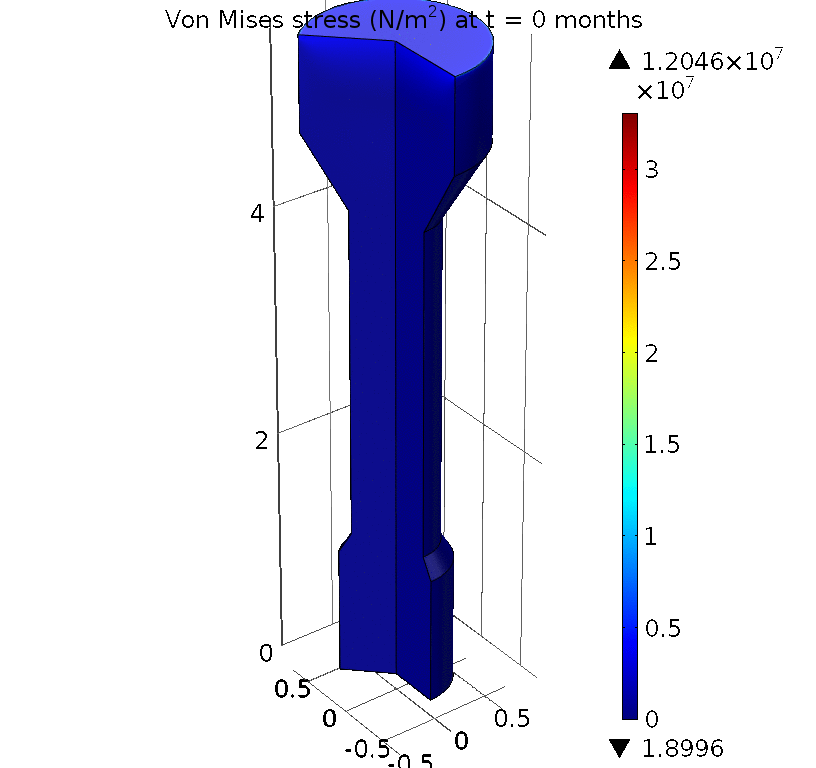Past/Present and Future Areas of Research Interest:
My research interests span several sub-disciplines within nuclear engineering and extends beyond the nuclear engineering domain. Broadly, I am interested in developing open-source tools for nuclear engineers and scientists that contribute to reproducible and transparent scientific practices.
While by no means comprehensive, I am interested in the following topics:
- Computational methods for neutron transport
- High performance computing
- Applications of nuclear physics
- Coupled neutronic/thermal-hydraulic and neutronic/nuclear material multiphysics
- Advanced reactor core design
Hybrid Methods in Neutron Transport
The bulk of my dissertation work was in the realm of hybrid methods for neutron transport. In particular, I implemented a hybrid method analogous to CADIS and FW-CADIS that is used to generate variance reduction parameters for problems with deeply-penetrating radiation that also consisted of regions with strong angular anisotropies in the neutron flux. CADIS and FW-CADIS have been successful at accelerating Monte Carlo solutions for deep-penetration local- and global- radiation transport, but they struggle with strong localized angular flux gradients. My method incorporated more information from the flux anisotropy into the variance reduction parameters, more effectively capturing this type of phenomena.
Software: Denovo, ADVANTG, MCNP5, VisIT
Packages: hdf5, silo
Languages: Python 2.7, Python 3.4
Mars Rover Neutron Source
39Ar/40Ar geochronology is a widely used technique to datermine the age and history of geological samples. This method is well suited to old samples with complex thermal histories. However, this technique requires a fast neutron source to initiate the 39K(n,p)39Ar reaction. My work on this project was to design a low-mass, high-flux, fast-flux neutron source to send on future rover missions designed specifically for 39Ar/40Ar geochronology. My collaborators and I determined that it was feasible to design a neutron source for this purpose, but shielding the rover and terrestrial body from the source would be the biggest obstacle in designing a mass-feasible device.
Software: MCNP5
Languages: Python 2.7
PB-FHR Central Reflector
The bulk of my Master’s work was focused on determining the lifetime of a large reactor component in a pebble bed, fluoride salt-cooled, high temperature reactor. The technology relevant to this reactor is currently being investigated by an Integrated Research Project (IRP) between MIT, the University of Wisconsin, Madison, and UC Berkeley. UC Berkeley has been spearheading the core design for this reactor; at the time of this writing the current design was the PB-FHR MK-1. The core configuration of this design is comprised of fueled pebbles are in an annulus around a graphite central reflector. The central reflector provides moderation for the neutrons, a more distributed burnup of core pebbles, and also provides flowpaths for crossflow of the coolant in the core.
The earliest designs of the MK-1 had the central reflector constructed of a solid block of graphite. Given that this component is essentially in the center of the core, it will see extremely high temperatures and fluences. Furthermore, the effective moderation of the central reflector will lead to strong fluence gradients in both the axial and radial directions of the reflector. This will lead to enormous stress buildups due to radiation-induced swelling in the graphite.
My analysis concluded that without redesign, the central reflector will require replacement frequencies that render the Mk-1 design unfeasible. The analysis was performed using MCNP5 and COMSOL multiphysics.
Software: MCNP5, COMSOL Multiphysics
Languages: Python 2.7, MATLAB

PB-FHR Test Reactor
In addition to designing the core for a commercial PB-FHR, the FHR-IRP has been investigating a test reactor that mirrors the physics of the large, commercial-scale PB-FHR. For this project I attempted to design a 20 MWth, 1m3 test reactor FHR that had the same reactivity coefficients and neutron energy spectrum as the commercial core. I determined that while it was possible to get close to the same neutron energy spectrum to the PB-FHR, it was very difficult to match reactivity coefficients between both cores.
Software: MCNP5, BEAU, ORIGEN
Languages: Python 2.6, MATLAB
99-Mo production
As an undergraduate student I worked on a research project with the objective to produce 99-Mo in small, low power, light water research reactors. In support of this initiative, I performed parametric studies to maximize the 99-Mo produced in a novel target design. Our work on this resulted in a patent, and the technology has continued development at an OSU startup.
Software: MCNP5


